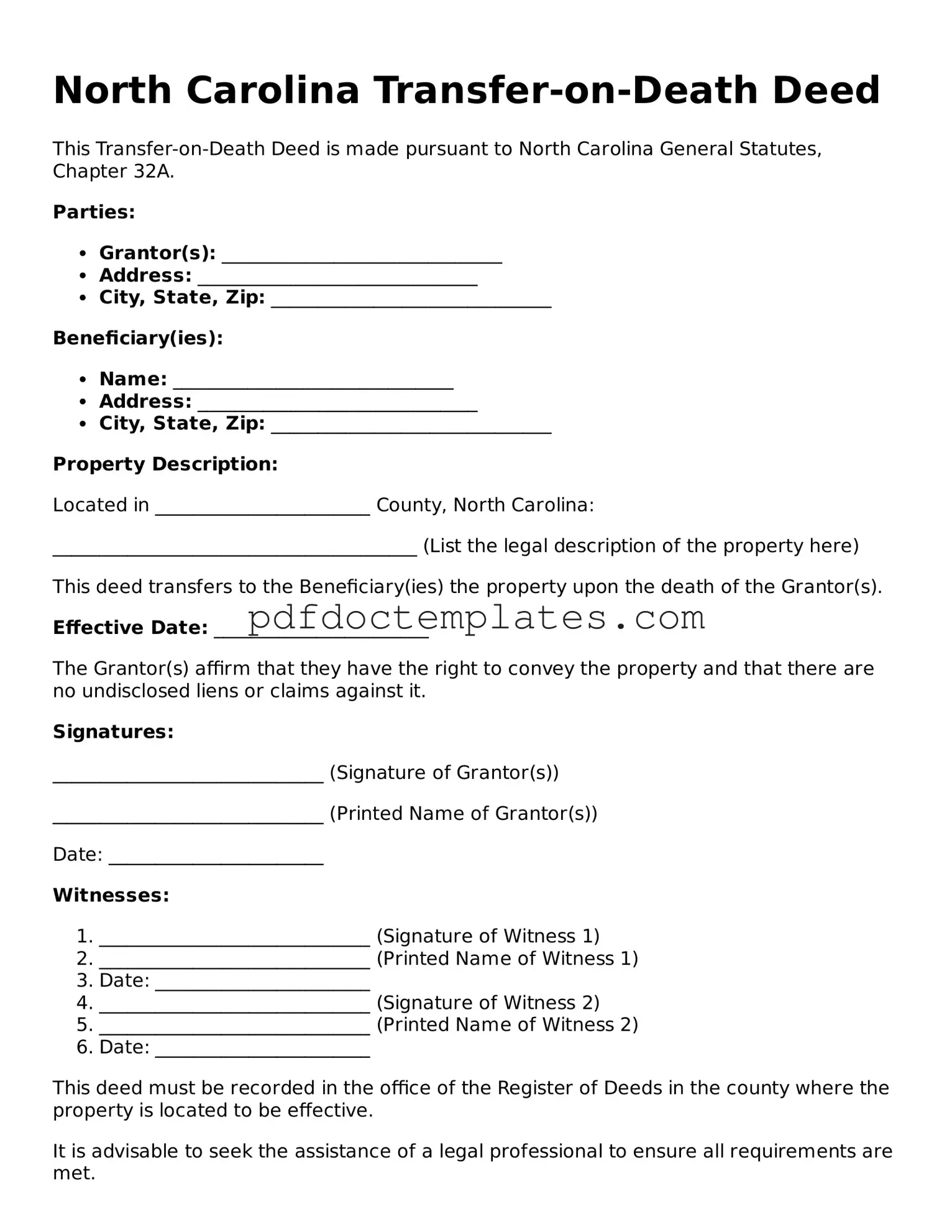North Carolina Transfer-on-Death Deed
This Transfer-on-Death Deed is made pursuant to North Carolina General Statutes, Chapter 32A.
Parties:
- Grantor(s): ______________________________
- Address: ______________________________
- City, State, Zip: ______________________________
Beneficiary(ies):
- Name: ______________________________
- Address: ______________________________
- City, State, Zip: ______________________________
Property Description:
Located in _______________________ County, North Carolina:
_______________________________________ (List the legal description of the property here)
This deed transfers to the Beneficiary(ies) the property upon the death of the Grantor(s).
Effective Date: _______________________
The Grantor(s) affirm that they have the right to convey the property and that there are no undisclosed liens or claims against it.
Signatures:
_____________________________ (Signature of Grantor(s))
_____________________________ (Printed Name of Grantor(s))
Date: _______________________
Witnesses:
- _____________________________ (Signature of Witness 1)
- _____________________________ (Printed Name of Witness 1)
- Date: _______________________
- _____________________________ (Signature of Witness 2)
- _____________________________ (Printed Name of Witness 2)
- Date: _______________________
This deed must be recorded in the office of the Register of Deeds in the county where the property is located to be effective.
It is advisable to seek the assistance of a legal professional to ensure all requirements are met.
